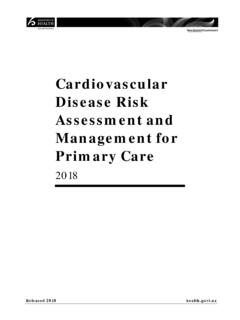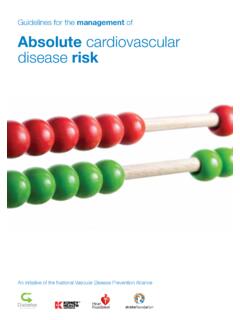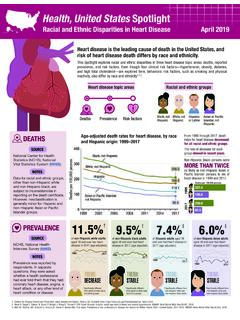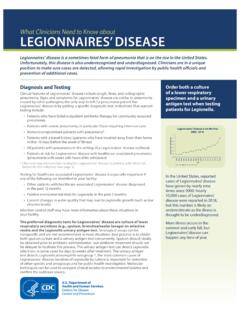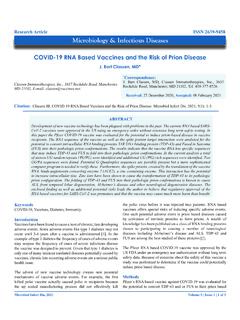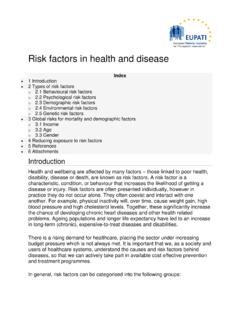Transcription of CNES 2019 v1 Legionnaires Disease Risk Assessment & …
1 CNES 2019 v1 Legionnaires Disease Risk Assessment & guidelines Who can carry out an Assessment ? Landlords and letting agents can carry out a Legionnaire s risk Assessment themselves if the property is a single dwelling or a flat with its own water supply (hot and cold) and they are competent to do so. In particular landlords should: understand different types of water systems understand Legionella bacteria and the factors which increase the risk of an outbreak in a domestic setting understand the control measures which if present will reduce the risk of an outbreak within a domestic setting Before considering carrying out a risk Assessment you should familiarise yourself in particular with the following HSE publications: - Legionella and landlords responsibilities - Legionnaire s Disease : A brief guide for duty holders - Legionnaire s Disease Part 2.
2 The control the relevant part of Legionella in hot and cold water systems If you do not consider that you are competent then give the task to someone who is. The risk Assessment process The practical risk Assessment should include a site survey of the water system. A template is attached which is suitable for a basic system and can be adapted as required. The assessor should complete all the sections. The assessor should understand the water systems and any associated equipment in the property, in order to conclude whether the system is likely to create a risk from exposure to Legionella. It is important to identify whether: water is stored or re-circulated as part of the system (areas of risk include water tanks, dead legs, shower heads and/or long runs of pipe work containing warm water) the water temperature in some or all parts of the system is between 20 45 C (hot water should be stored in any tanks at 60 C)
3 There are sources of nutrients such as rust, sludge, scale and organic matters conditions are present to encourage bacteria to multiply it is possible for water droplets to be produced and, if so, whether they could be dispersed, showers there are parts of the system that are used infrequently guest bathrooms it is likely that any of the tenants, residents, visitors etc are more susceptible to infection due to age, health or lifestyle and whether they could be exposed to any contaminated water droplets Reviewing the risk Assessment If the risk Assessment concludes there is no reasonably foreseeable risk or the risks are insignificant and are managed properly to comply with the law, the Assessment is complete.
4 Although no further action may be required at this stage, existing controls must be maintained. The Assessment of risk is an ongoing process and not merely a paper exercise. The Assessment should be reviewed regularly and specifically when there is reason to suspect it is no longer valid. The attached advice leaflet should be given to tenants. Educating tenants Landlords should inform tenants of the potential risk of exposure to Legionnaire s Disease within domestic properties and its consequences. They should advise on any actions arising from the findings of the risk Assessment , where appropriate. Tenants should be advised in particular that they should.
5 Inform the landlord/letting agent if they believe the hot water temperature is below 50 C or the hot water tank/boiler is defective in any way not adjust the temperature of the hot water advise landlord/letting agent if they believe the cold-water temperature is above 20 C flush through little used outlets for 5 minutes at least once a week (turn the water on slowly so that it doesn t splash, releasing water droplets into the air and then run at a flow rate that does not cause aerosols) clean, disinfect and descale shower heads at least once every 6 months notify the landlord/letting agent if they notice any debris or discolouration in the hot or cold water Unoccupied properties Is the property left unoccupied for periods of time, holidays/ Christmas/New Year then the system should be flushed.
6 Special care should be taken when flushing showers. Ideally the showerhead should be removed (and disinfected separately) but if this isn t possible, cover it with a towel or plastic bag and run it at its hottest setting. CNES 2019 v1 Tenants Guide to Legionnaire s Disease Please keep this leaflet for Information Purposes What is Legionella? Legionella is a bacteria that is naturally occurring in water sources such as lakes, reservoirs and ponds. It can enter the water systems within houses through the mains supply and given the right conditions, can begin to proliferate and potentially pose a threat. Is it harmful? Although naturally occurring and present in low levels in a lot of water sources, the bacteria is usually not harmful if ingested, but if the bacteria is spread through an aerosol (a garden hose or shower head) and comes into contact with a susceptible person, it is possible that they could contract Legionnaires Disease .
7 What is Legionnaire s Disease ? Legionnaires ' Disease is a potentially fatal form of pneumonia caused by the inhalation of small droplets of contaminated water containing Legionella. Legionnaires Disease is often mistaken for other Disease that affect the lungs, like pneumonia and the only way to get a definite diagnosis is through tests like blood and urine Where is Legionella found? Hot and cold water systems in residential properties are a potential source for legionella bacteria growth. The main areas of risk are where the bacteria can multiply and increase to dangerous levels and then spread, in spray from showers and taps, even in dishwasher and washing machine pipes.
8 Conditions ripe for colonisation are where water of between 20 C and 45 C stagnates, and where there is sludge, rust and scale present for the bacteria to feed upon and multiply. Who is at risk? Legionnaire s Disease most commonly affects the elderly, or people with chest or lung problems. Not everyone exposed to legionella bacteria becomes ill. Legionnaire s Disease is not contagious and you cannot get it from drinking water. What precautions can I take? Taking the following simple precautions will help keep you safe: Inform the landlord/letting agent if you believe the hot water temperature is below 50 C or the hot water tank/boiler is defective in any way Do not adjust the temperature of the hot water Advise landlord/letting agent if you believe the cold-water temperature is above 20 C Flush through little used outlets for 5 minutes at least once a week (run taps at a flow rate that will avoid aerosols)
9 Clean, disinfect and descale shower heads at least once every 6 months Notify the landlord/letting agent if they notice any debris or discolouration in the hot or cold water Unoccupied properties Is the property left unoccupied for periods of time, holidays/ Christmas/New Year then you should flush the system when you return. Special care should be taken when flushing showers. Ideally the showerhead should be removed (and disinfected separately) but if this isn t possible, cover it with a towel or plastic bag and run it at its hottest setting for at least five minutes. What do I do if I think I may have contracted Legionnaire s Disease ? If you suspect that you or someone in your home has contracted Legionnaire s Disease , contact your doctor immediately.
10 Landlords should ensure tenants are given this leaflet CNES 2019 v1 Examples of water systems Hot & cold water storage gravity fed system- Pressurised mains-fed water system - Pressurised mains-fed water system - Cold water storage only mains pressure hot water system - CNES2019 v1 Legionnaires Disease Risk Assessment Property address Date of Assessment Assessment carried out by Describe property type Is there any tenant, resident or regular visitor particularly susceptible to Legionella due to age, health or lifestyle? Describe type of cold-water system mains feed or from storage tank (Include sketch if possible at rear of document) Describe type of hot water system mains feed via combi boiler or from storage tank.
